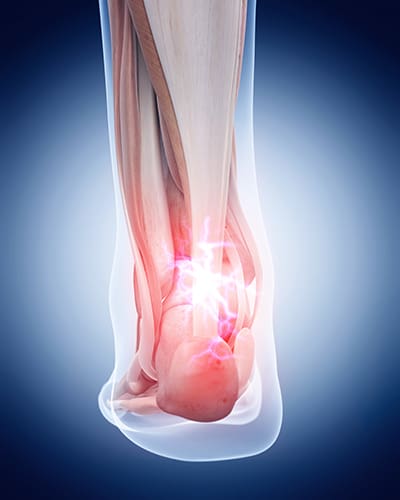How Is It Done?
The goal of surgery is to reestablish the connection between your calf muscles and heel bone by repairing and reconnecting the torn portions of your Achilles tendon.
While there are different ways in which surgery to repair an Achilles tendon can be performed, most cases involve a single, large incision in the back of the leg. After finding each end of the ruptured tendon, surgeons use sutures to sew the tendon back together, and then close the incision.
Because of the Achilles’ direct effect on your ability to walk, many patients seek immediate treatment at a hospital’s emergency department following a rupture. Your doctor will discuss your injury, ask for a complete medical history, and conduct physical tests during the diagnosis process. If uncertain whether the tendon has been completely, or only partially torn, your doctor may also conduct an MRI scan of your leg.
Following surgery to repair an Achilles tendon, patients are placed in a cast and temporarily directed not to put weight on the operated leg. Patients are fitted for crutches, a knee scooter, or a wheelchair to provide mobility during early recovery stages, and encouraged to elevate their leg when resting. After a few weeks the cast is removed and patients are positioned into a walking boot and allowed to begin light, weight-bearing exercises. At six weeks most patients began extensive physical therapy programs outside of the boot. Exercise and physical therapy is critical to complete rehabilitation, and dependent on each individual’s response to physical activity. Most patients are able to return to full activity within six months.

